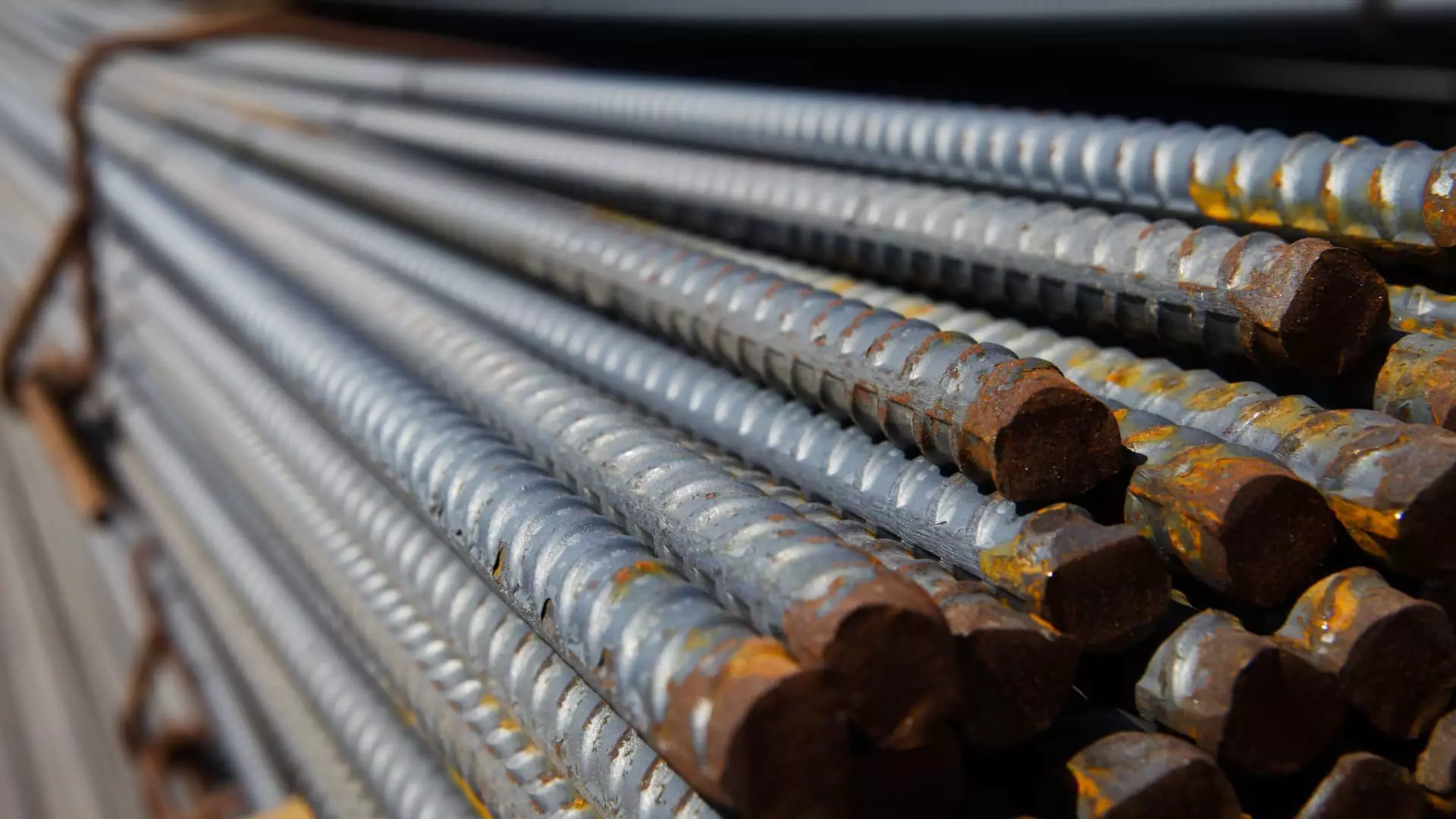The steel industry in the United States has found itself at a crossroads, especially in the wake of recent tariff implementations proposed by President Donald Trump. While these tariffs—25% on imports from Canada and Mexico and 10% on those from China—seem to provide a significant boon to domestic steel producers, the longer-term outlook is fraught with complexities. Investors and market analysts are cautiously optimistic but were quick to issue warnings, signaling that the landscape for U.S. steel manufacturers is anything but certain.
The announcement of tariffs initially sent the market into disarray, with the Dow Jones Industrial Average suffering a notable drop. Stocks across various sectors experienced turbulence, but within a short span, the steel sector exhibited a degree of resilience. Notably, companies like Nucor and U.S. Steel saw their stocks increase slightly, reflecting immediate optimism fueled by potential price hikes in the wake of reduced foreign steel competition. However, this brief surge should be viewed cautiously, especially given the unpredictable nature of imports and market conditions.
The rationale behind implementing such tariffs is straightforward; the U.S. steel market has been plagued for years by foreign entities engaging in “dumping,” where products are sold at prices lower than their normal market value. This practice has severely tilted the playing field against domestic manufacturers, who have been unable to compete effectively. Leon Topalian, CEO of Nucor, has drawn attention to these longstanding issues, advocating that illegal dumping and currency manipulation persist as high hurdles for U.S. steel producers to overcome.
The current tariffs might provide a momentary respite from these challenges, but inherent vulnerabilities remain. For example, Canada and Mexico are the leading steel exporters to the United States, and any shifts in trade partnerships could have far-reaching implications. Despite temporary protections, the potential for foreign retaliation or changes in trade policy could unsettle the market considerably.
According to a report by Morgan Stanley, the impact of tariffs will indeed bolster the pricing power of U.S. steelmakers in the immediate future. Analyst Carlos De Alba projects a gradual improvement in prices post-2024, underlined by the structural shifts introduced via protectionist measures. Nevertheless, any price increases must be tempered by current market realities, including the projected modest growth of steel demand, expected to hover around 1.6%.
Furthermore, despite bullish forecasts, a sobering assessment from Bank of America highlights potential pitfalls, including an anticipated decline in automobile production—a sector that consumes roughly 25% of U.S. steel. This reduction in demand poses a significant threat to the sustainability of price hikes driven by tariffs and could lead to an oversaturation of the domestic market.
Adding another layer of complexity, the competitive landscape within the steel industry is undergoing its own shifts. The proposed acquisition of U.S. Steel by Nippon Steel of Japan met a blockade from the Biden administration earlier this year, emphasizing the regulatory scrutiny foreign investments face under current political climates. Meanwhile, Nucor’s potential collaboration with Cleveland-Cliffs to bid for U.S. Steel indicates a possible consolidation trend within the industry, leading to heightened competition and innovation but also potentially turbulent transitions.
Analysts from UBS caution that while immediate price increases seem plausible, a focus on ongoing sustainability is crucial. Capacity additions and low demand could undercut price gains in the medium term, leading to a fluctuating market for steel equities. As market variables continue to evolve, steel manufacturers will need to adapt swiftly to retain their advantages.
The U.S. steel industry stands at an intriguing yet precarious juncture. While current tariffs provide a layer of protection against foreign competition, the landscape is marred by underlying forces such as demand limitations and potential regulatory shifts. As both investors and industry leaders assess the ramifications of these policies, a balanced approach, weighing potential benefits against existent challenges, will be vital for long-term success and stability in the U.S. steel market.

